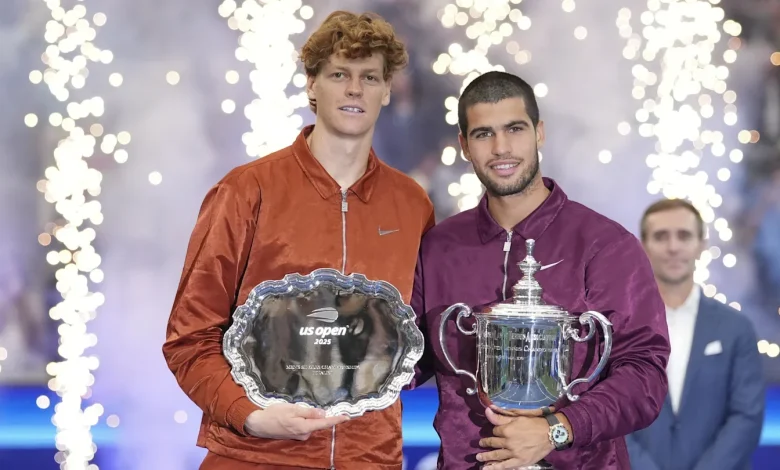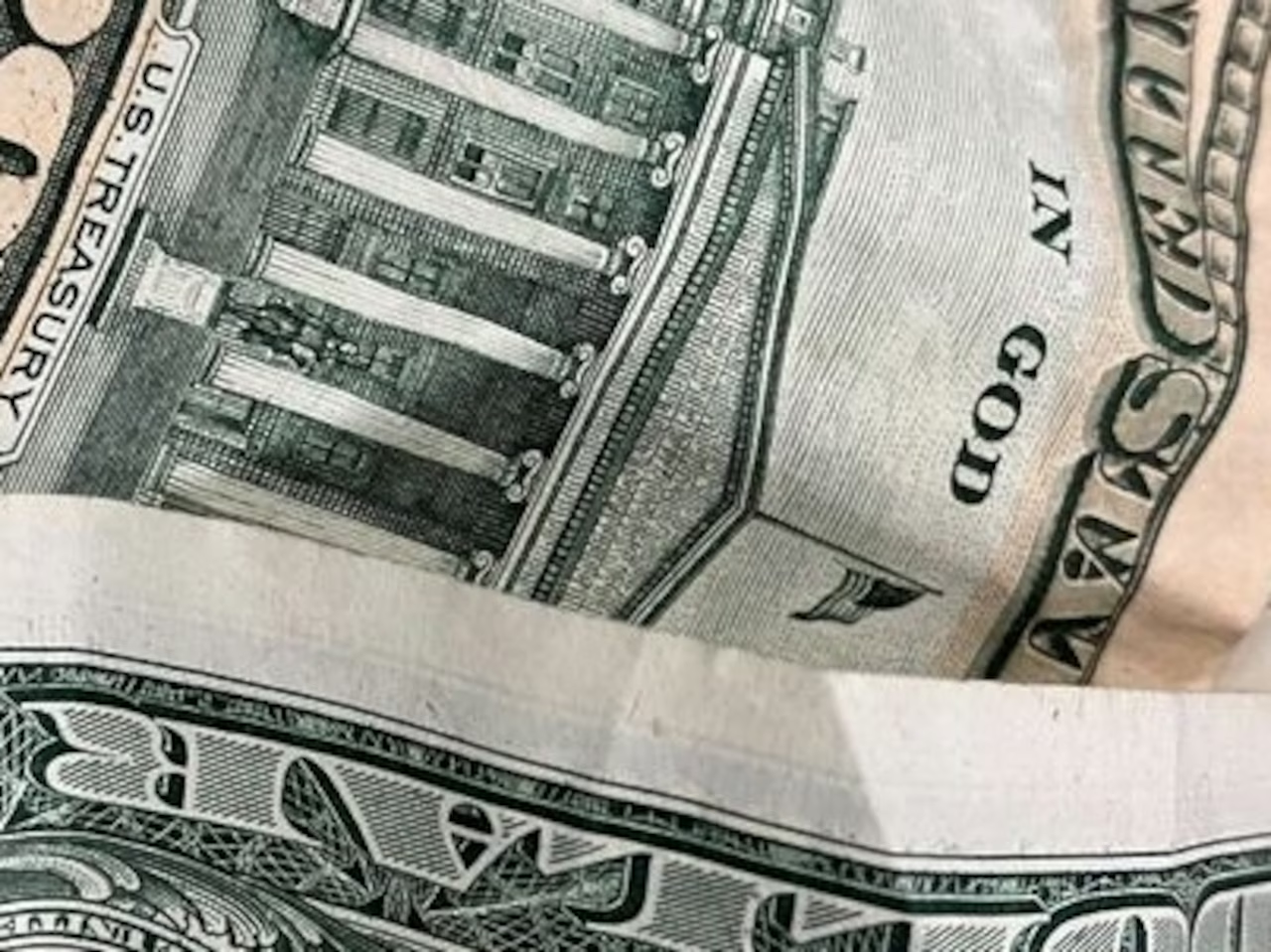Tennis Mailbag: Eye-Popping Figures Behind Jannik Sinner, Carlos Alcaraz’s Dominance

Hey everyone …
• Here’s the latest Served podcast:
• Two titans of doubles called it a career in recent days. Take a bow, Rohan Bopanna and Nicolas Mahut.
• Can someone tell Holger Rune that there is literally no one—at least no one whose opinion matters—not rooting maniacally for him to make a full and fast return? If he wants to keep the comeback content coming, the Republic of Tennis is here for it.
• This week’s unsolicited book recommendation: The Art of Tennis by Nicholas Fox Weber.
• Note the Andy Roddick Foundation Gala next week.
Onward …
Hi Jon. Another nice statistic showing the current dominance of [Carlos] Alcaraz and [Jannik] Sinner… together [they] have as many ranking points as [Alexander] Zverev, [Taylor] Fritz, [Novak] Djokovic, [Ben] Shelton and [Alex] de Minaur combined!! (22.750 against 22.780)
Martin L.
• Thanks, good pull. Some other eye-popping items going around social media: At every tournament this year that Sinner and Alcaraz both entered, one or the other took the title. Sinner did not play a match between Australia and Rome, more than three months out of action, and he still could finish the year at No.1. Between Miami and the French Open, Alcaraz reached the final (or won) every event he entered.
Beyond the numbers, there is the eye test. Sinner looked far from his best at the Paris Masters. He appeared nauseous, required trainer visits and referenced feeling bothered by various aches. He dropped profanities at this box. And he still won the tournament without dropping a set.
We, the tennis-viewing public, are a persnickety, hard-to-please bunch. Parity reigns, and we wish players would step up. Then, two players dominate, and we lament that there isn’t more parity.
Jon I saw the segment you and Jim Courier did on Tennis Channel about Carlos Alcaraz’s schedule. Will you do the same for Jannik Sinner?
G.G., New York
• Thanks, you can watch the referenced segment here:
For the record, this was all Jim’s idea and execution. The rationale? Alcaraz—quite reasonably and civilly—spoke out recently about the playing demands put upon players. Given the parameters of the ATP schedule and a willingness to forsake short-term gain (appearance fees and bonuses) for an additional few years of playing, what should Alcaraz’s optimal schedule look like?
My minor quibbles? It’s hard to tell a Spanish player to miss a Spanish event (Barcelona). If part of your legacy is inspiring kids in your home country and solidifying your status there, don’t you want to play more, not fewer, events in your motherland? Also, maybe a player of Alacraz’s track record on grass—and ease with the transition—doesn’t need to play a Wimbledon tune-up?
I joked to Jim that Alcaraz skipping Montreal/Toronto was the equivalent of a Canadian tennis tariff. It would be crushing to that event if Alcaraz and Sinner continued to take a pass. But this is the price you pay for the 12-day Masters nonsense. In the short (and sometimes brutally hot) interregnum between Wimbledon and the U.S. Open, it’s preposterous to ask players to commit to 20-plus days of hard-court tennis. All the more so when the players are based an ocean away. If Canada and Cincinnati hadn’t overreached, and were still one-week affairs, we wouldn’t be here.
I like the Sinner idea. We’ll pass that on to the good folks in the control room. Maybe next time he gripes about the schedule—which he’d be within his rights to do—we’ll pare down his commitments.
Hey Jon!
Here’s a very interesting thing that I started noticing in the Djokovic vs. [Roger] Federer rivalry:
Who, in their best of five matches, typically ran overall higher distances? Hint … you’d be very surprised at the answer!
It’s a telling statistic … one player’s game was extremely balanced off both wings … the other had to make up for a known weakness running around it, and hide it with more aggression off other tremendously gifted faculties.
Happy researching! Not all is as it seems on the court does it?
Cheers, Vijay K
• For the record, Federer did more running. I appreciate a good, counterintuitive stat as much as anyone. But, for me, “distance covered” doesn’t—pun intended—get us very far. If I cover less ground than my opponent, it may mean that I am being out-hustled and outplayed. It might also mean I am positioned in the middle of the court, dictating points while my opponent is scrambling from one corner to the other. I’m envisioning Serena Williams, in particular, covering a lot less ground than her opponent, and winning 6–3, 6–2.
Who’s had the best post-maternity leave career? Serena and [Victoria] Azarenka have kind of redefined what that looks like professionally—I know Margaret Court, Evonne Goolagong and Kim Clijsters have won slams but between Serena, Azarenka and Clijsters, whose career post-maternity would you rather have? Thinking of this as [Belinda] Bencic has almost gotten to the top 10 in a year post-return, [Elina] Svitolina and [Naomi] Osaka keep pushing the bar higher, and anticipating with more rankings protections more top players will have children earlier in their careers.
Willie T.
East Lansing, MI
PS: Shout out Tatjana Maria—maybe the only player who’s had a better and longer career since motherhood than she did before?
• A) Absolutely shout out to Tatjana Maria, who is 38 and still a top-50 baller.
B) While we’re here, props to Azarenka (a future Hall of Famer), who was the driving force behind this improved maternity leave policy.
C) A point for discussion: The Saudi role in financing the WTA’s maternity policy is either sportswashing at its most elevated or, more charitably, a sign of progress from a country that only recently lifted its ban on women driving cars.
D) To your question, Clijsters has to be “the winner,” no? And, what, you ask, became of young Jada, who was in attendance when her mother won back-to-back U.S. Opens. Here she is launching from downtown Antwerp, showing off her handle, bringing flair in the open floor.
Kim Clijsters celebrated with her daughter Jada Lynch after winning the 2010 U.S. Open. / Susan Mullane-Imagn Images
Hey Jon,
I hope all is well. With the seasons heading into the tour finals, I was looking at a bit of history at the WTA event. I was surprised when I saw that the women played a best of five set final from 1984 to ‘98. I don’t think I’ve ever seen a WTA scoreline where it wasn’t a two of three. What’s the lore around that?
Also, four of eight finalists this year are American (side note: I’m hoping, as a Canadian, we get one—FAA [Felix Auger-Aliassime]—on the men’s side, but it’s a longshot). I haven’t looked it up, but I wonder when that last happened. I’m going to assume there was a year where Williams x 2, [Jennifer] Capriati and [Lindsay] Davenport were there?
Best regards,
L.T. (Toronto)
• A) I try, strenuously, to avoid being the “back in my day” guy, but one of my early assignments for Sports Illustrated was covering the 1998 WTA Finals. Martina Hingis beat Lindsay Davenport 7–5, 6–4, 4–6, 6–2. If I am not mistaken, that marked the last best-of-five match on the WTA Tour.
B) Here’s the unvarnished, unspun deal with best-of-five matches. The men insist on the format. The thinking is that as long as they want to go full-on gladiator and do it, why fight them? If, tomorrow, the men said, We prefer best-of-three matches. Why beat up our bodies if you’ll pay us the same wages for less work? Neither the majors nor the ATP would fight it. For all the talk of load management in other sports, here is a rare example of athletes agitating for more work, and management effectively saying, You know, you guys don’t have to do this if you don’t want to.
The women decided years ago that they were good with playing best-of-three. There were virtually no voices of dissent.
C) All credit to the U.S. and, by extension, the USTA. At a time of relentless globalization, it’s quite a feat that one country has sourced four of the world’s top eight players (and a singles finalist in the past five majors).
D) Bear in mind that the WTA Finals used to be ravaged by injuries and withdrawals. In many years, the WTA had to go deep into the top 10 to find a field. So there was a difference between how many Americans were eligible for the year-end soirée and how many actually played.
E) That said, I had fun going back and looking at past fields for the WTA finals. In 2002, for instance, there were four Americans (Serena Williams, Venus Williams, Monica Seles and Jennifer Capriati) and two Belgians, including winner Kim Clijsters. Get this: In 1999, there were four Americans in the top 10, but also four players from France, a country that, currently, has zero players in the top 35.
• The World Anti-Doping Agency (WADA) has published its Prohibited List for 2026, and the ITIA is actively reminding players, their support teams and coaches to be aware of changes to the list of banned substances, which goes into effect starting Jan. 1, 2026. The List is available to read in full by clicking here, and includes a number of modifications from the 2025 version.





